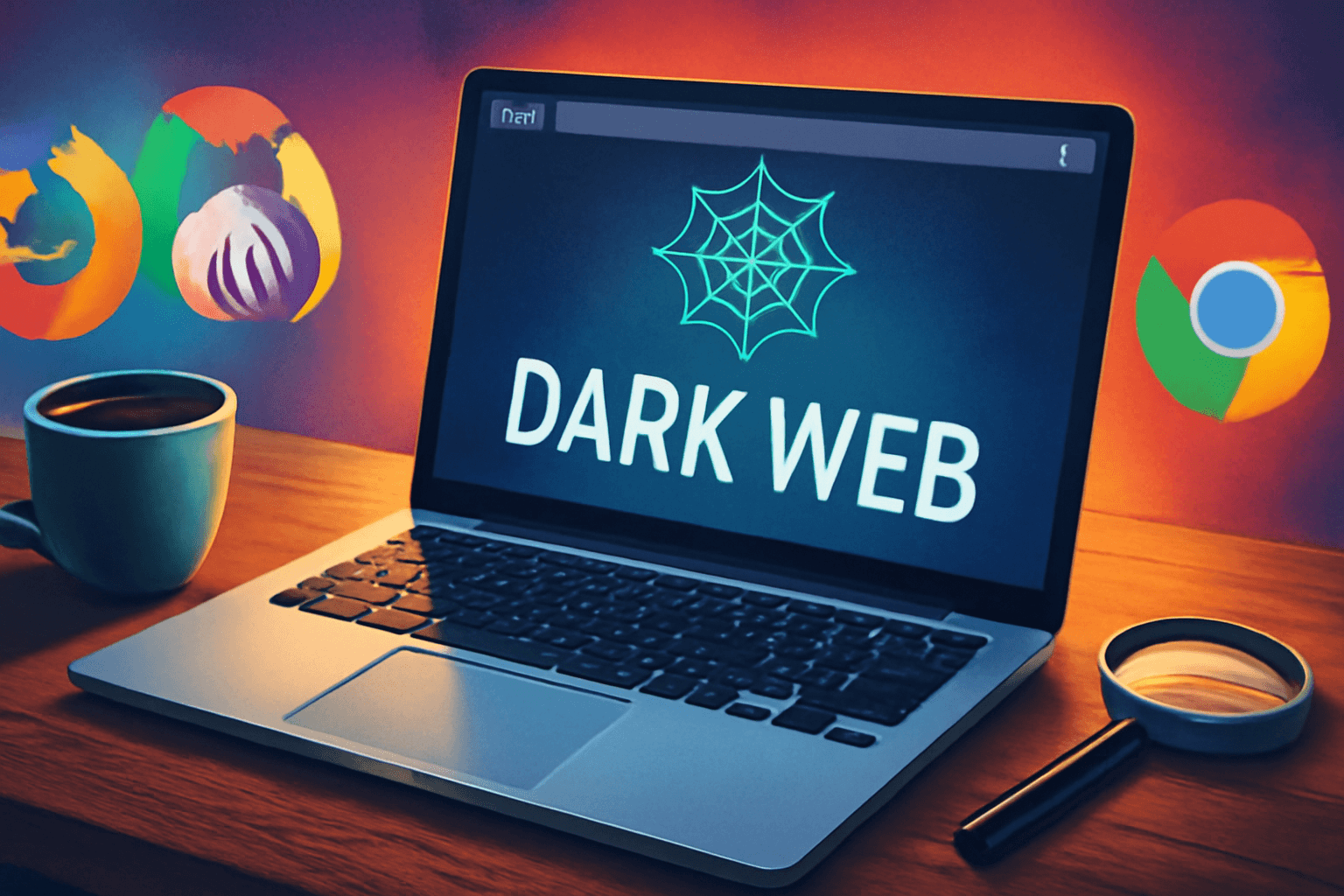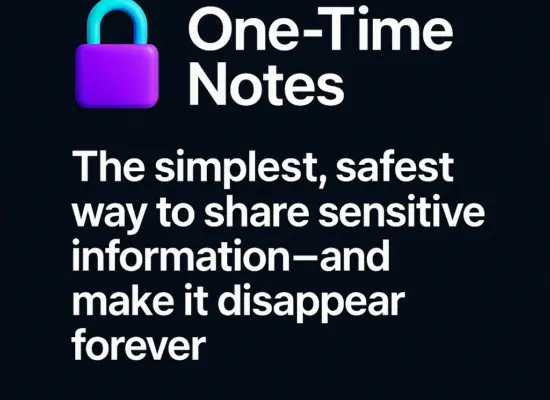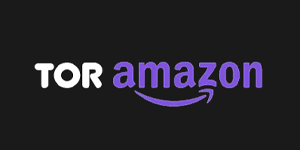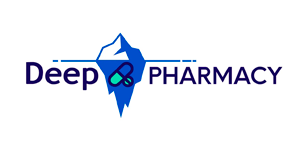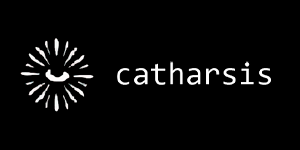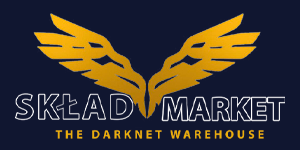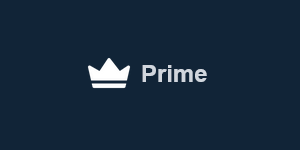Last Updated on May 14, 2025 by DarkNet
The dark web remains one of the internet’s most intriguing yet misunderstood environments. Often portrayed in popular media as a shadowy realm of illicit activity, the dark web in reality encompasses much more—serving as a critical refuge for privacy advocates, whistleblowers, journalists, and everyday individuals seeking anonymity in an era where digital surveillance is increasingly prevalent.
In 2025, as governments and corporations intensify their surveillance capabilities, the importance of secure, private access to online information has never been greater. Navigating the dark web safely and effectively, however, requires more than ordinary tools; it demands specialized browsers and robust security measures designed explicitly to protect users from tracking, cyber threats, and privacy breaches.
Choosing the right tools isn’t just about convenience—it’s a crucial step toward ensuring your personal safety, digital privacy, and anonymity. In this guide, we’ll explore the best browsers and essential tools available in 2025, empowering you to access the dark web responsibly, securely, and with confidence.
What is the Dark Web and Why is it Important in 2025?
To truly understand the importance of the dark web in 2025, it’s essential first to clarify what it is—and what it isn’t. The internet, broadly speaking, is categorized into three distinct layers: the surface web, the deep web, and the dark web.
-
Surface Web: This is the internet as most people know it. Easily accessible via standard browsers and indexed by search engines, it includes sites like Wikipedia, social media platforms, and news outlets.
-
Deep Web: Contrary to popular belief, the deep web is not inherently mysterious or illegal. It consists simply of online content that isn’t indexed by search engines, such as private databases, subscription-based services, banking details, or personal email inboxes.
-
Dark Web: The dark web, a small subsection of the deep web, can only be accessed using specialized software or browsers—most notably Tor (The Onion Router)—which enable users to navigate anonymously. Sites on the dark web use encrypted networks and conceal their identities, creating an environment that supports both privacy and secrecy.
Why is the Dark Web Relevant in 2025?
In 2025, digital privacy faces unprecedented challenges. Governments worldwide have intensified online surveillance in the name of national security, while corporations increasingly monetize personal data. As digital rights erode, anonymity online is becoming a necessity rather than a luxury for many individuals.
Here are three critical areas where the dark web’s relevance stands out in 2025:
-
Privacy and Security: With personal data breaches and identity theft at an all-time high, the dark web provides critical tools and methods that allow users to maintain their digital security and safeguard their sensitive information from malicious actors.
-
Freedom of Expression and Information: In countries with restrictive censorship or authoritarian governments, the dark web serves as a lifeline, enabling dissidents, journalists, and ordinary citizens to access unbiased information, communicate securely, and share critical news without fear of persecution.
-
Anonymity in the Digital Age: As technologies such as facial recognition, digital tracking, and data analytics grow more advanced, true anonymity is increasingly scarce. The dark web offers individuals the means to communicate and transact anonymously, reinforcing personal freedom and autonomy online.
Ultimately, in 2025, understanding and responsibly utilizing the dark web isn’t merely about curiosity or niche interest—it’s about protecting fundamental rights and preserving the core values of privacy, freedom, and security in an increasingly surveilled digital world.
Review of the Best Browsers for Dark Web Access in 2025
Selecting the right browser for accessing the dark web is crucial, as it significantly impacts anonymity, security, and overall usability. Here’s a detailed analysis of the top browsers available in 2025, each uniquely suited to different types of users and requirements.
Tor Browser
Key Features & Operation:
Tor Browser remains the gold standard for dark web access in 2025. It routes your traffic through multiple encrypted nodes using onion routing technology, effectively masking your IP address and digital footprint. Its foundation on Firefox ESR (Extended Support Release) ensures regular security updates and stability.
Main Advantages:
-
Exceptional Anonymity: Multi-layered encryption significantly reduces tracking and fingerprinting.
-
Ease of Use: Pre-configured privacy settings enable immediate secure access with minimal setup.
-
Strong Community Support: Robust development support from privacy advocates, consistently updating security protocols and fixing vulnerabilities.
Potential Disadvantages:
-
Performance Issues: Routing through multiple nodes can result in slower browsing speeds.
-
Blocked by Certain Services: Some websites and services block traffic originating from known Tor nodes, limiting access to parts of the internet.
Brave Browser with Tor Integration
Key Features & Operation:
Brave Browser integrates Tor technology directly into its platform, offering users an accessible, user-friendly gateway to the dark web. Users can easily open Tor-enabled private tabs alongside their regular browsing sessions, making it ideal for seamless and secure browsing experiences.
Main Advantages:
-
Convenience and Versatility: Instant access to Tor’s anonymity features without separate software installation.
-
Performance: Generally faster than traditional Tor Browser due to optimized architecture.
-
Enhanced Security: Built-in ad blocking, tracker protection, and integrated privacy features enhance overall security online.
Potential Disadvantages:
-
Reduced Anonymity Compared to Dedicated Tor Browser: Integrated Tor tabs may not offer the same depth of anonymity as dedicated Tor sessions.
-
Limited Customization: Advanced users may find Brave less configurable than dedicated privacy-focused browsers.
Freenet
Key Features & Operation:
Freenet operates uniquely, functioning as a decentralized, peer-to-peer network rather than a traditional browser. It encrypts and distributes data across a vast, anonymous network of user nodes, ensuring extreme levels of anonymity and censorship resistance. Users contribute bandwidth and storage space, forming a cooperative network.
Main Advantages:
-
Extreme Privacy: Designed explicitly for robust anonymity, resistant to censorship or centralized interference.
-
Persistent Information Access: Content hosted on Freenet remains accessible indefinitely, protected by its decentralized nature.
-
Community-Driven and Independent: Ideal for users requiring high levels of privacy without reliance on corporate or government infrastructures.
Potential Disadvantages:
-
Complexity and User Experience: Less intuitive interface, often challenging for beginners to navigate and utilize effectively.
-
Slower Performance: Data routing and retrieval can be significantly slower due to reliance on distributed user nodes.
-
Limited Access to External Web Content: Primarily useful for accessing Freenet-hosted content rather than the broader dark or surface web.
I2P Browser
Key Features & Operation:
The Invisible Internet Project (I2P) Browser emphasizes a fully encrypted, decentralized approach to dark web access, routing traffic through an anonymous network of user-operated tunnels. It supports both web browsing and secure communication, offering additional services like email and instant messaging fully integrated into its secure environment.
Main Advantages:
-
Robust Anonymity and Security: Comprehensive encryption throughout the entire communication chain enhances user anonymity.
-
Resilience to Surveillance: Effective at circumventing censorship and surveillance due to decentralized architecture.
-
Versatile Communication Tools: Includes built-in, anonymous email and messaging applications, beneficial for activists, journalists, or privacy-sensitive users.
Potential Disadvantages:
-
Learning Curve: More complex initial setup compared to Tor or Brave; better suited to technically proficient users.
-
Smaller User Base: Less widely adopted than Tor, meaning fewer resources and potentially limited access to specific dark web communities or resources.
-
Network Speed Limitations: Speeds are often slower due to extensive routing procedures across decentralized nodes.
In 2025, each of these browsers presents unique strengths and limitations. Selecting the optimal tool depends primarily on your individual privacy requirements, technical expertise, and the specific contexts in which you plan to access the dark web.
Essential Tools for Secure Dark Web Access
When accessing the dark web, using specialized browsers alone isn’t enough. To achieve true anonymity and robust security, it’s essential to combine your chosen browser with supplementary tools that protect your identity, encrypt your communications, and secure your device from various threats. Here’s a practical overview of the most essential tools available in 2025.
VPN Services: Adding an Extra Layer of Anonymity
A Virtual Private Network (VPN) encrypts your internet traffic, routing it through servers in different geographical locations. This masks your IP address and secures your connection, significantly enhancing anonymity and protection against surveillance or tracking.
Recommended VPN Providers in 2025:
-
NordVPN: Renowned for its strict no-logs policy, robust encryption protocols, and extensive global server coverage, making it ideal for secure and flexible connections.
-
Mullvad: Praised for strong privacy standards, it requires minimal user information (accepts anonymous payments), enhancing user anonymity and reducing traceability.
-
ProtonVPN: Based in privacy-friendly Switzerland, ProtonVPN is notable for transparent privacy policies, open-source codebase, and integration with other secure services like ProtonMail.
Practical Usage Advice:
-
Always activate your VPN before opening a dark web browser or visiting sensitive sites.
-
Choose VPN servers located in privacy-respecting jurisdictions to further minimize risks.
-
Regularly check that your VPN connection remains active during browsing sessions.
Tails OS: The Ultimate Anonymity Operating System
Tails (The Amnesic Incognito Live System) is a privacy-oriented operating system that runs directly from a USB drive, DVD, or SD card. It leaves no digital footprint on your primary system, ensuring your activities can’t be traced back to your regular devices.
Key Benefits:
-
Automatic Data Erasure: All session data is wiped upon shutdown, leaving no traces.
-
Built-in Tor Integration: Preconfigured for secure, anonymous browsing via Tor Browser.
-
Comprehensive Security Tools: Includes encryption utilities, secure messaging, and document editing tools.
Practical Usage Advice:
-
Always verify Tails OS integrity after downloading to avoid tampered or malicious copies.
-
Regularly update your Tails OS version to benefit from the latest security improvements.
-
Use a dedicated USB stick exclusively for Tails OS to maintain maximum security and isolation.
Whonix OS: Advanced Security through Isolation
Whonix OS operates through virtualization, utilizing two distinct virtual machines: a gateway VM routing all internet traffic through Tor, and a workstation VM isolating user activities. This isolation significantly reduces the risks of malware, tracking, or leaks compromising user privacy.
Key Benefits:
-
Network Isolation: Separates the workstation environment from external network exposure, enhancing security against attacks.
-
Comprehensive Tor Integration: Routes all network traffic exclusively through Tor, reducing risks of accidental IP leaks.
-
Advanced Protection Features: Offers built-in security mechanisms like IP/DNS leak prevention and anonymized application setups.
Practical Usage Advice:
-
Install Whonix on secure virtualization software such as VirtualBox or Qubes OS.
-
Avoid installing additional software on Whonix unless absolutely necessary, as extra applications could compromise security.
-
Regularly apply security updates within the Whonix environment to maintain protection against emerging threats.
Password Managers and Anonymous Email Services: Strengthening Digital Identity Protection
Protecting your digital identity is crucial when navigating the dark web. Password managers and anonymous email services prevent unauthorized access and ensure private communications.
Recommended Tools:
-
Bitwarden (Password Manager):
Purpose & Benefits: An open-source password manager offering strong encryption, cloud synchronization, and easy multi-platform access. Ideal for securely storing complex, unique passwords.
Practical Advice:
-
Enable two-factor authentication (2FA) for enhanced protection.
-
Use long, randomized passwords generated by Bitwarden for sensitive accounts.
-
-
KeePass (Password Manager):
Purpose & Benefits: Fully offline, open-source password manager suited for users seeking total control over their data storage without cloud reliance.
Practical Advice:
-
Regularly back up encrypted password databases securely.
-
Prefer offline storage to ensure maximum security and reduce potential breaches.
-
-
ProtonMail (Anonymous Email):
Purpose & Benefits: Provides end-to-end encrypted, anonymous email communication based in Switzerland, offering strong privacy laws.
Practical Advice:
-
Avoid linking ProtonMail addresses to your real identity.
-
Regularly purge emails containing sensitive information after use.
-
By integrating these tools with secure browsers, users can confidently navigate the dark web while maximizing security, anonymity, and digital privacy in 2025.
Comparative Analysis of Browsers and Tools for Dark Web Access (2025)
Choosing the right browser and supporting tools depends on individual needs, technical proficiency, and specific privacy objectives. Below is a comparative analysis highlighting key criteria such as connection speed, level of anonymity, ease of use, and support quality for the top options available in 2025.
Comparative Table: Browsers
|
Browser |
Connection Speed |
Anonymity & Privacy |
Ease of Use |
Updates & Support |
|---|---|---|---|---|
|
Moderate/Slow |
Very High ✅ |
High ✅ |
Excellent ✅ |
|
|
Brave Browser (Tor integrated) |
Fast ✅ |
High |
Very High ✅ |
Very Good |
|
Slow |
Very High ✅ |
Low |
Moderate |
|
|
I2P Browser |
Moderate |
Very High ✅ |
Moderate |
Good |
Comparative Table: Essential Tools
|
Tool |
Connection Speed |
Anonymity & Privacy |
Ease of Use |
Updates & Support |
|---|---|---|---|---|
|
VPNs (NordVPN, Mullvad, ProtonVPN) |
Fast ✅ |
High ✅ |
Very High ✅ |
Excellent ✅ |
|
Tails OS |
Moderate |
Very High ✅ |
Moderate |
Excellent ✅ |
|
Whonix OS |
Moderate/Slow |
Very High ✅ |
Moderate |
Very Good |
|
Password Managers (Bitwarden, KeePass) |
N/A |
High ✅ |
High ✅ |
Excellent ✅ |
|
ProtonMail |
Fast ✅ |
Very High ✅ |
Very High ✅ |
Excellent ✅ |
Analysis by User Scenario
To help you choose effectively, consider the following recommendations based on your specific scenario and needs.
1. Beginners & Casual Users
If you’re new to dark web navigation and prioritize ease of use combined with solid security, consider:
-
Browser: Brave Browser (Tor integration)
-
Offers an intuitive, familiar experience similar to standard web browsing.
-
Provides good anonymity with faster connection speeds.
-
-
VPN: NordVPN or ProtonVPN
-
Simple interfaces, strong privacy protections, reliable performance.
-
-
Password Manager & Email: Bitwarden and ProtonMail
-
User-friendly, secure, and seamlessly integrated into daily browsing habits.
-
2. Intermediate & Advanced Users
For users comfortable with technical tools, desiring a balance between customization and robust anonymity, suitable tools include:
-
Browser: Tor Browser or I2P Browser
-
Strong anonymity, with sufficient control and configurability.
-
-
OS: Tails OS
-
Highly secure, ideal for portable, secure browsing without leaving traces.
-
-
VPN: Mullvad or ProtonVPN
-
Highly customizable, prioritizing anonymity through anonymous payment options and open-source transparency.
-
-
Password Manager & Email: KeePass (offline control) and ProtonMail
-
Secure solutions with increased flexibility, especially for those who prefer to manage data locally.
-
3. Users Prioritizing Maximum Anonymity
For individuals with critical privacy needs—journalists, whistleblowers, or those in restrictive environments—the following tools offer maximum anonymity and security:
-
Browser: Tor Browser or Freenet
-
Tor Browser is the gold standard for anonymity.
-
Freenet is ideal for those needing resistance to censorship and permanent access to sensitive content.
-
-
OS: Whonix OS or Tails OS
-
Whonix offers rigorous isolation and persistent anonymity through virtualization.
-
Tails provides portable, non-traceable sessions with built-in security features.
-
-
VPN: Mullvad
-
Anonymous payments and strong no-log policies make Mullvad particularly suitable.
-
-
Password Manager & Email: KeePass (offline) and ProtonMail
-
KeePass keeps passwords off-cloud entirely, while ProtonMail offers robust end-to-end encrypted communication.
-
Summary of Strengths and Weaknesses
-
Tor Browser: Best overall anonymity but slower connections due to onion routing.
-
Brave with Tor: Excellent speed and usability but slightly lower anonymity compared to dedicated Tor Browser.
-
Freenet & I2P: Highly secure, but slower speeds and complex usability limit mainstream appeal.
-
VPNs (NordVPN, Mullvad, ProtonVPN): Excellent for general privacy; ease-of-use varies slightly with Mullvad being most privacy-focused.
-
Tails & Whonix OS: Provide superior anonymity and isolation at the cost of moderate complexity and reduced convenience.
-
Password Managers & ProtonMail: Essential security complements, highly user-friendly, and regularly updated.
Choosing the right combination of these browsers and tools will greatly enhance your security, anonymity, and effectiveness on the dark web in 2025, tailored specifically to your privacy needs and expertise level.
Security and Safety Recommendations for Dark Web Usage (2025)
Despite its benefits for privacy and anonymity, accessing the dark web in 2025 still carries significant risks. Users need to clearly understand these threats and proactively implement strong security practices. This section outlines the main risks you’ll encounter, along with actionable advice to minimize and manage these dangers effectively.
Major Risks When Accessing the Dark Web
1. Malicious Websites and Malware
The dark web hosts numerous sites explicitly designed to distribute malware. Viruses, spyware, ransomware, and other harmful software can compromise your device, steal sensitive data, or enable remote spying.
2. Phishing Attacks and Scams
Phishing attempts remain common, tricking users into revealing personal details, login credentials, cryptocurrency wallets, or financial information through deceptive websites and messages.
3. De-anonymization and Surveillance
Sophisticated tracking technologies, compromised entry nodes, or poorly managed anonymity practices can lead to user identification and monitoring by governments, hackers, or other entities.
4. Law Enforcement Operations
Law enforcement actively monitors and occasionally infiltrates illegal marketplaces or suspicious forums, posing risks even to legitimate users who inadvertently interact with compromised entities.
Practical Tips for Minimizing Risks
To safely navigate the dark web, adopt these proactive and rigorous security habits:
1. Digital Hygiene and Best Practices
-
Keep Software Updated:
Regularly update your operating system, browsers (Tor, Brave, I2P), VPN services, and antivirus software. Updates fix vulnerabilities and protect against known exploits.
-
Use Antivirus and Malware Protection:
Employ robust antivirus tools like Malwarebytes or Bitdefender, regularly scanning for potential malware or viruses.
-
Never Download Unknown Files:
Avoid downloading files from untrusted sources. If downloads are essential, always scan them using antivirus tools, preferably within isolated or virtual environments.
-
Practice URL Verification:
Double-check URLs carefully. Many phishing attacks rely on similarly named websites designed to deceive users.
2. Choose Secure Tools and Maintain Anonymity
-
Always Use a VPN:
Select reputable VPN providers like Mullvad, ProtonVPN, or NordVPN to encrypt your connection and protect your true IP address. Activate the VPN before opening any dark web browser.
-
Use Specialized Browsers and Operating Systems:
Access the dark web via Tor Browser or Brave’s Tor tabs. For maximum security, employ anonymity-centric operating systems like Tails or Whonix.
-
Regularly Rotate Identities:
Periodically create fresh anonymous profiles. Avoid linking any pseudonymous activity back to your real identity or online habits.
-
Employ Isolation via Virtualization:
Consider using virtualization software (e.g., VirtualBox) to isolate browsing environments. Virtual machines limit potential infections from affecting your primary system.
3. Secure Account Management and Communication
-
Use Strong, Unique Passwords:
Leverage secure password managers like Bitwarden or KeePass to store randomly generated, complex passwords unique to each site or service.
-
Enable Two-Factor Authentication (2FA):
Activate 2FA whenever available. Use secure apps (e.g., Authy, Aegis) instead of SMS-based verification for better protection.
-
Opt for Anonymous Email Services:
Utilize services like ProtonMail to maintain encrypted, anonymous communication. Never link anonymous email accounts with your real-world identity.
4. Behavioral Recommendations
-
Limit Personal Information Disclosure:
Never reveal personal details, locations, or activities. Assume any shared information could be compromised.
-
Trust No One (Zero-Trust Mindset):
Maintain skepticism when interacting on dark web platforms. Avoid unnecessary interactions or transactions to minimize exposure to scams or infiltration.
-
Stay Informed About Security Threats:
Regularly consult reliable security resources, cybersecurity forums, or privacy-focused communities for updates on new threats, vulnerabilities, or compromised platforms.
Maintaining Long-Term Security
Secure dark web browsing is an ongoing process. Regularly evaluate and enhance your security practices:
-
Audit Your Privacy Settings:
Regularly check settings in browsers, VPNs, and operating systems to ensure maximum protection remains enabled.
-
Back Up Important Data Securely:
Maintain encrypted backups of important data on offline, secure storage devices, minimizing loss risks from potential malware or ransomware attacks.
-
Educate Yourself Continuously:
Stay abreast of security trends, practices, and techniques, adapting your security measures accordingly.
By proactively employing these detailed, actionable security measures, you can confidently mitigate risks and safely utilize the dark web while preserving your privacy and anonymity in 2025.
Conclusion
Choosing the right combination of privacy-focused browsers, hardened operating systems, VPNs, and secure communication tools is no longer optional—it is the foundation of safe dark-web exploration in 2025. Each solution brings its own balance of speed, anonymity, and ease of use, and matching those qualities to your threat model is critical to preventing de-anonymization, malware infections, and data theft.
Digital surveillance and cybercrime continue to rise, underscoring the need for disciplined cybersecurity habits. Keeping software patched, using reputable VPNs, adopting Tails or Whonix for sensitive sessions, and relying on robust password managers and encrypted email services collectively form a powerful shield for your identity.
Take the initiative today: audit your setup, integrate the recommended best practices, and cultivate a zero-trust mindset every time you connect. With vigilant tool selection and consistent security hygiene, you can preserve your privacy, protect your data, and navigate the dark web with confidence.

